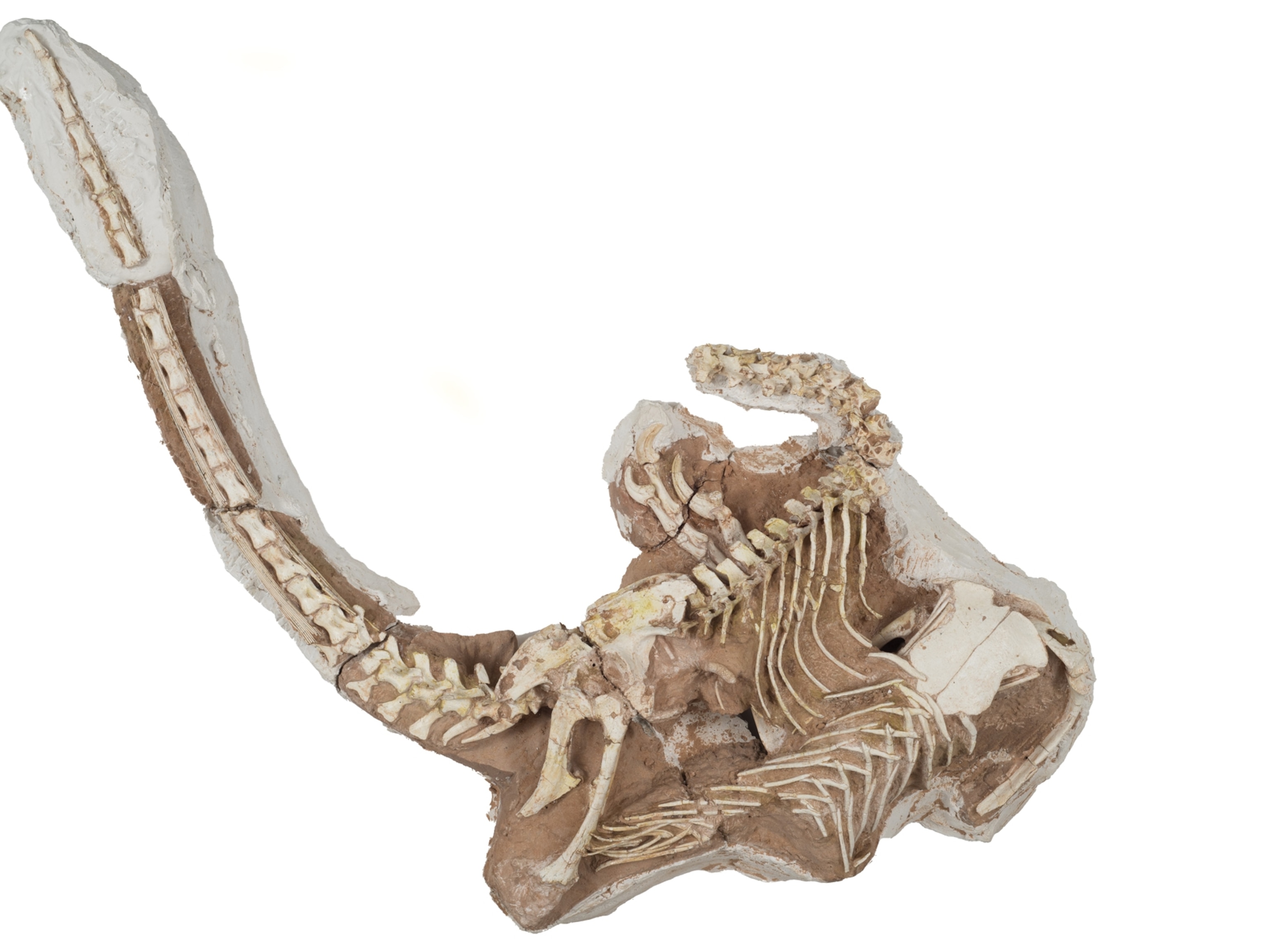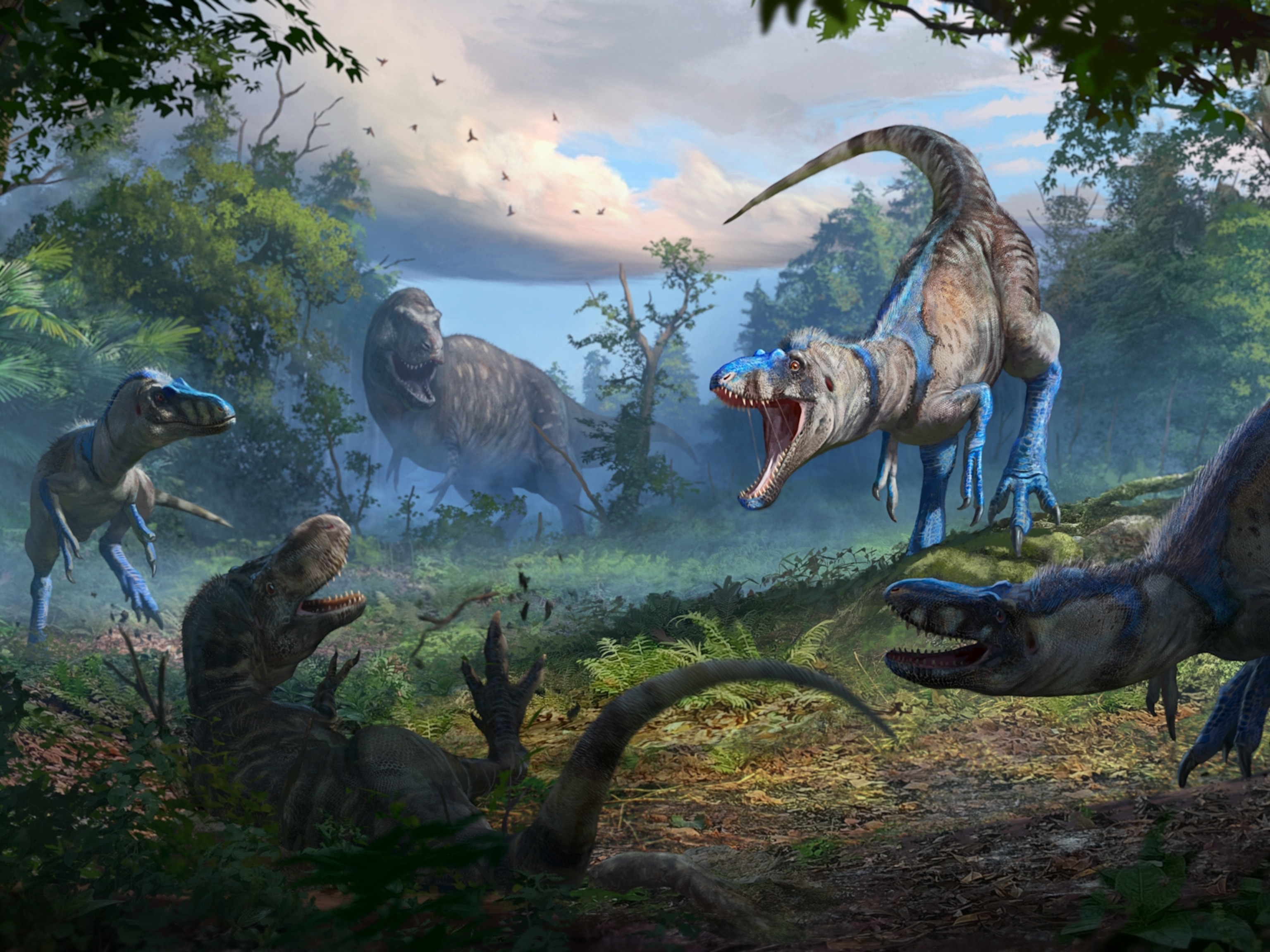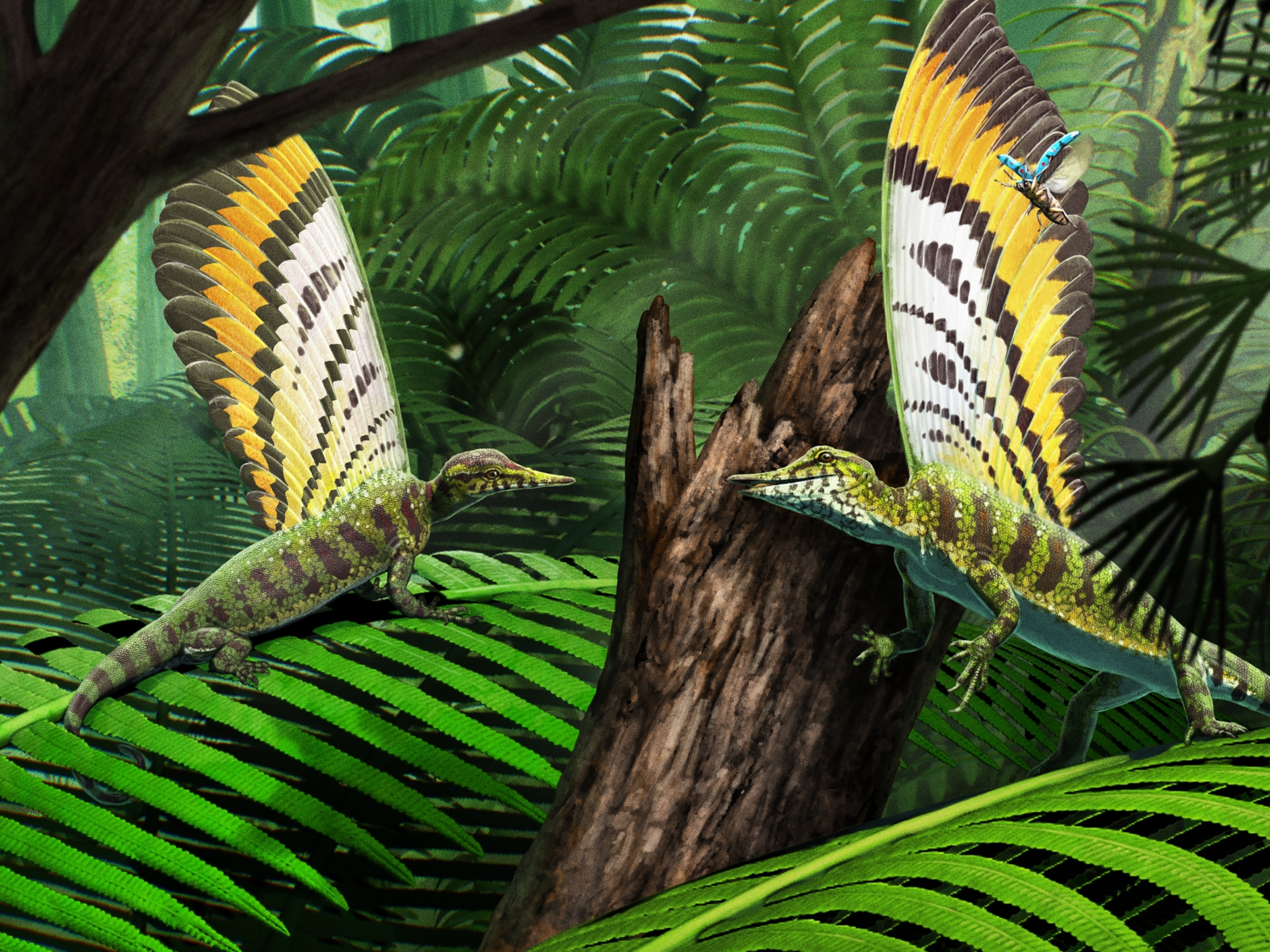
New Triceratops Cousin Had a Gnarly, Bumpy Skull
The Jurassic fossil indicates that Triceratops’ ancestors diversified earlier than previously thought, a new study suggests.
A newly discovered dog-sized relative to Triceratops had a showy skull covered with mysterious bumps of bone.
The newly discovered dinosaur is named Hualianceratops wucaiwanensis (“ornamental face”) after its facial furrows. Its remains are about 160 million years old, researchers report Wednesday in PLoS ONE, making this one of the oldest ceratopsians—the group of dinosaurs that includes Triceratops—ever found.
Despite Hualianceratops’ “ornamental” name, the researchers don’t know what function its bone bumps served. But study co-author Jim Clark of George Washington University suspects that they’re evolutionary holdovers from ceratopsians’ ancestors, which also sired the knobby-skulled pachycephalosaurs.
“It’s really weird,” says Nick Longrich, a paleontologist at the University of Bath who wasn’t involved with the study. Other Triceratops relatives also have gnarled, bumpy bones, "but this guy’s really taking it to an extreme.”
Longrich, for one, suggests that Hualianceratops’ skull furrows could have protected facial blood vessels from injury. He notes that similar bony bumps form on the skulls of giraffes and muskoxen, which fight among themselves for mates and territory.
“It's a small animal,” he adds, “but even very small animals can get pretty combative.”
The study describing Hualianceratops also rearranges the dinosaur family tree, suggesting that at least five different lineages of ceratopsians walked the earth more than 150 million years ago in an unexpectedly early burst of dinosaur diversification.
“It just shows how little we know and how much is left to discover, especially in the Jurassic,” says Clark,who coauthored the study with support from the National Geographic Society.
The fossils were first recovered in 2002 by a joint Chinese-American expedition to northwestern China’s Shishugou Formation, a site dated to the late Jurassic. Previous visits had yielded many remains of Yinlong downsi, a sheep-sized ancestral cousin of Triceratops that ran around on two legs and nibbled on vegetation with its parrot-like jaw.
(See photographs of Yinlong and other small dinosaurs found at a fossil trove in China.)
But among the Yinlong remains, researchers found an enigmatic, poorly preserved skull and part of a hind foot. At the time, the oddball fossils aroused faint suspicions among the team’s paleontologists, but they relegated the finds to the Yinlong drawers in Beijing’s Institute for Vertebrate Paleontology and Paleoanthropology, where they would gather dust for the next 12 years.
In 2014, however, Fenglu Han of the Chinese University of Geosciences reexamined the remains as part of his Ph.D. research, and found that the bones were hiding extra secrets. Gnarled, furrowed bumps dotted every skull fragment’s surface, forming a much more extreme bone texture than Yinlong had ever sported. And a closer look at the specimen’s jaw revealed that it was much beefier than Yinlong’s.
Han quickly realized that the skull belonged to a new species closely related to Yinlong, a revelation that has Han and his colleagues excited about what untold species are still hiding in the world’s museums.
“I just love it when you can just pluck something out of a [museum] collection and find something new,” says Catherine Forster of George Washington University, who coauthored the study. “It’s kind of what we live for.”
Follow Michael Greshko on Twitter.





